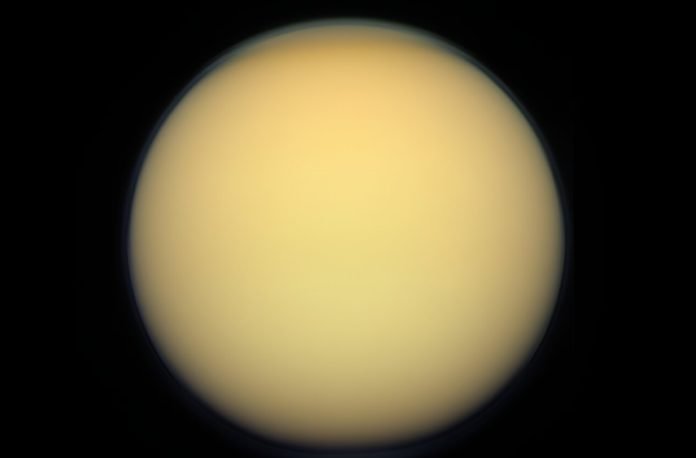
Titan, Saturn’s largest moon, is the only other body in our solar system that has active rivers, lakes, and seas.
These rivers are believed to be filled with liquid methane and ethane, which flow into large lakes and seas, some as big as the Great Lakes on Earth.
In 2007, NASA’s Cassini spacecraft confirmed the existence of Titan’s large seas and smaller lakes with stunning images.
Since then, scientists have been analyzing these images to understand the moon’s mysterious liquid environment better.
Recently, geologists at MIT studied Titan’s shorelines and found, through simulations, that the moon’s large seas might be shaped by waves. Until now, scientists had only indirect and conflicting evidence of wave activity on Titan’s surface.
The MIT team took a new approach by first modeling how a lake can erode on Earth. They then applied this model to Titan’s seas to determine what kind of erosion could have formed the shorelines seen in Cassini’s images.
Their results suggested that waves were the most likely cause.
However, the researchers emphasize that their findings are not definitive. To confirm the presence of waves on Titan, direct observations of wave activity on the moon’s surface are needed.
“We can say, based on our results, that if the coastlines of Titan’s seas have eroded, waves are the most likely culprit,” says Taylor Perron, a professor of Earth, Atmospheric, and Planetary Sciences at MIT.
“If we could stand at the edge of one of Titan’s seas, we might see waves of liquid methane and ethane lapping on the shore and crashing on the coasts during storms. And they would be capable of eroding the material that the coast is made of.”
Perron and his colleagues, including first author Rose Palermo, published their study in Science Advances. Their team included researchers from MIT, the U.S. Geological Survey, Brown University, the Woods Hole Oceanographic Institution, and Cornell University.
The presence of waves on Titan has been debated since Cassini first spotted liquid bodies on the moon’s surface.
“Some people who tried to see evidence for waves didn’t see any and said, ‘These seas are mirror-smooth,'” Palermo says. “Others said they did see some roughness on the liquid surface but weren’t sure if waves caused it.”
Knowing whether Titan’s seas have waves could provide valuable information about the moon’s climate, such as the strength of the winds that create these waves. It could also help scientists predict how Titan’s seas might change over time.
Instead of looking for direct signs of waves, Perron’s team analyzed the shape of the shorelines to determine what might be eroding them.
Titan’s seas likely formed as rising levels of liquid flooded a landscape with river valleys. The researchers considered three scenarios: no coastal erosion, erosion by waves, and “uniform erosion,” where liquid passively dissolves the coast or the coast gradually erodes under its own weight.
They simulated how different shoreline shapes would evolve under each scenario. For wave-driven erosion, they used a variable called “fetch,” which describes the distance over which wind can blow and create waves.
“Wave erosion is driven by the height and angle of the wave,” Palermo explains. “We used fetch to approximate wave height because the bigger the fetch, the longer the distance over which wind can blow and waves can grow.”
The researchers compared their simulations with actual lakes on Earth and found that wave-driven erosion created distinct shoreline shapes. When they applied their models to Titan’s largest seas—Kraken Mare, Ligeia Mare, Punga Mare, and Ontario Lacus—they found that wave erosion best explained their shapes.
“We found that if the coastlines have eroded, their shapes are more consistent with erosion by waves than by uniform erosion or no erosion at all,” Perron says.
The researchers are now trying to determine how strong Titan’s winds must be to create waves that erode the coasts. They also hope to learn from Titan’s untouched system to better manage Earth’s coastlines in the future.



